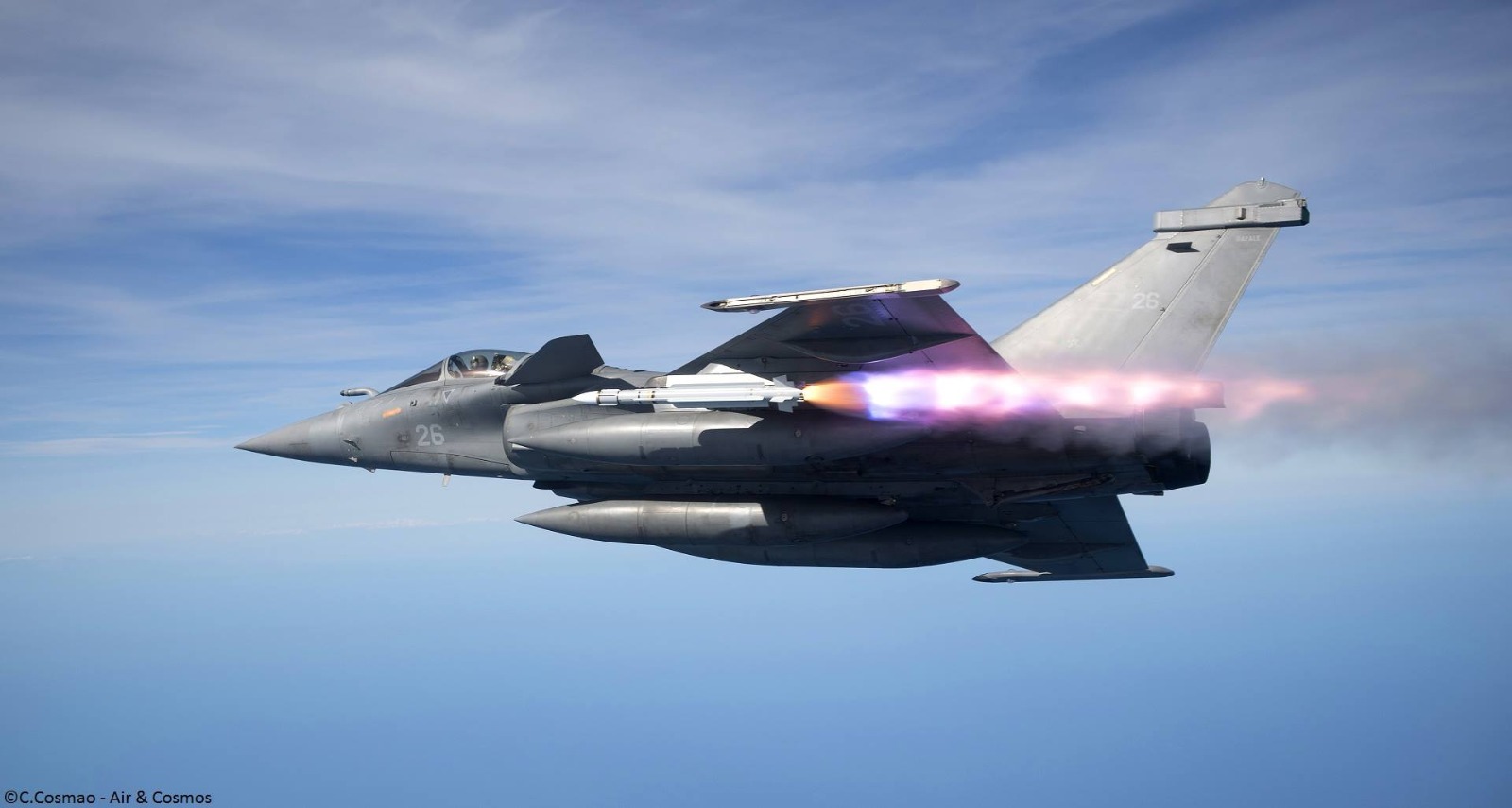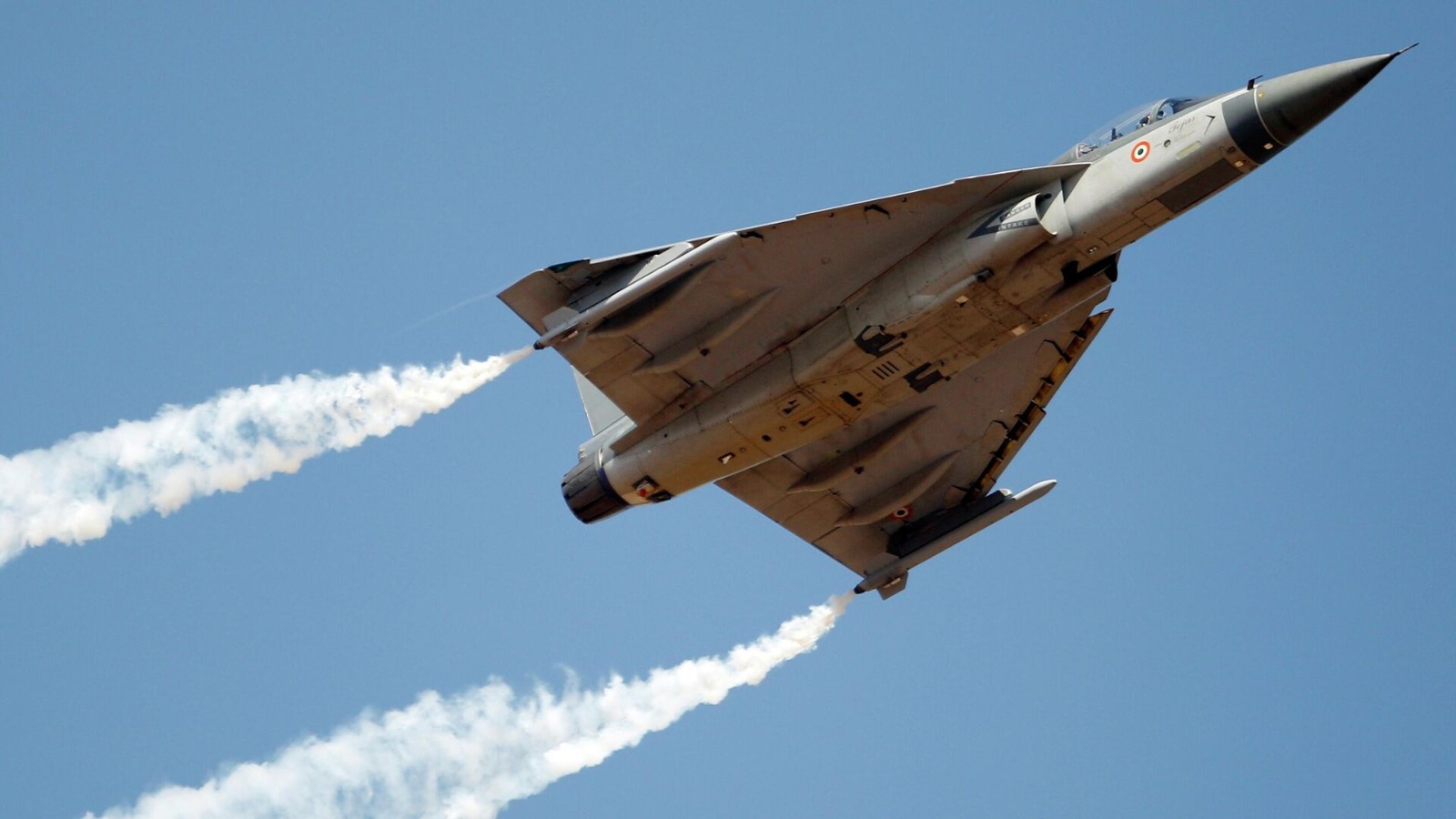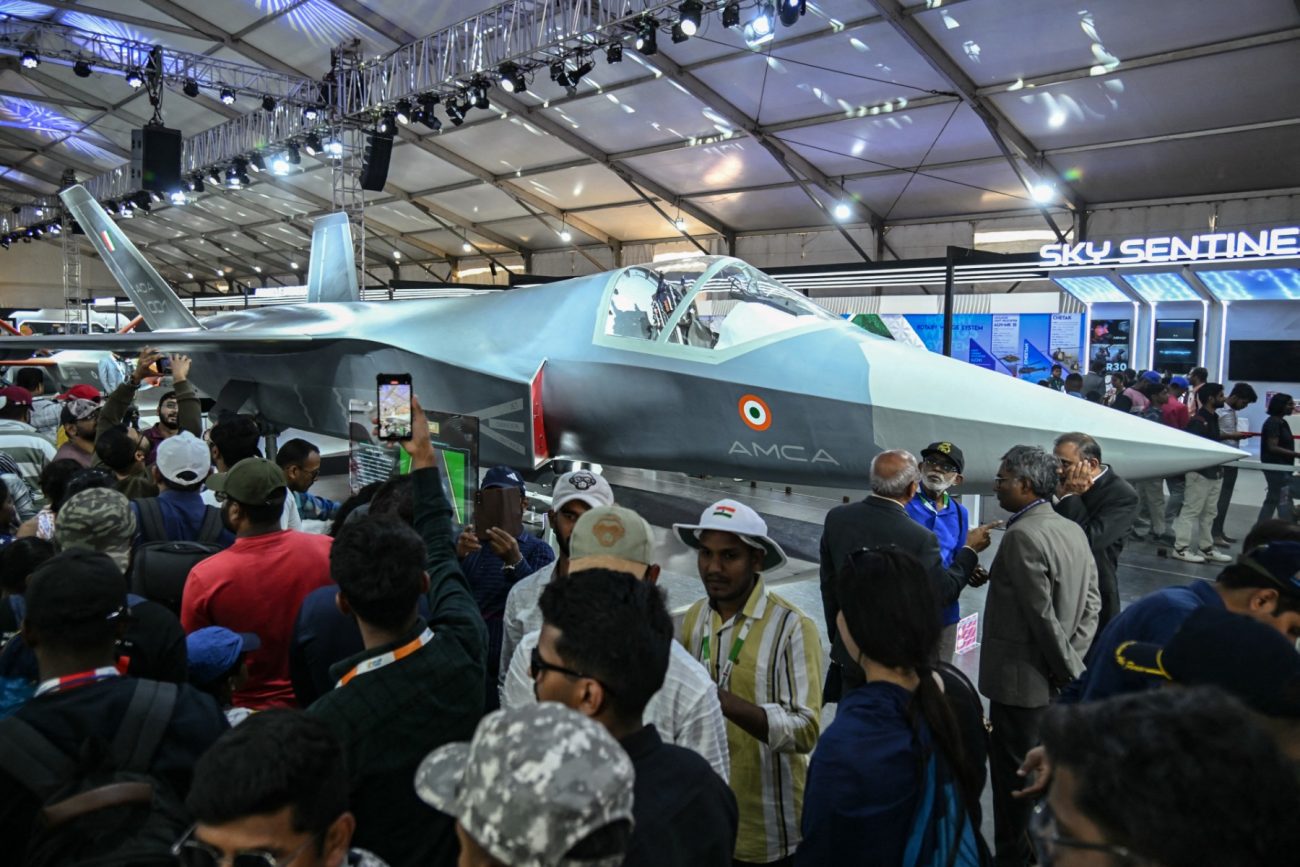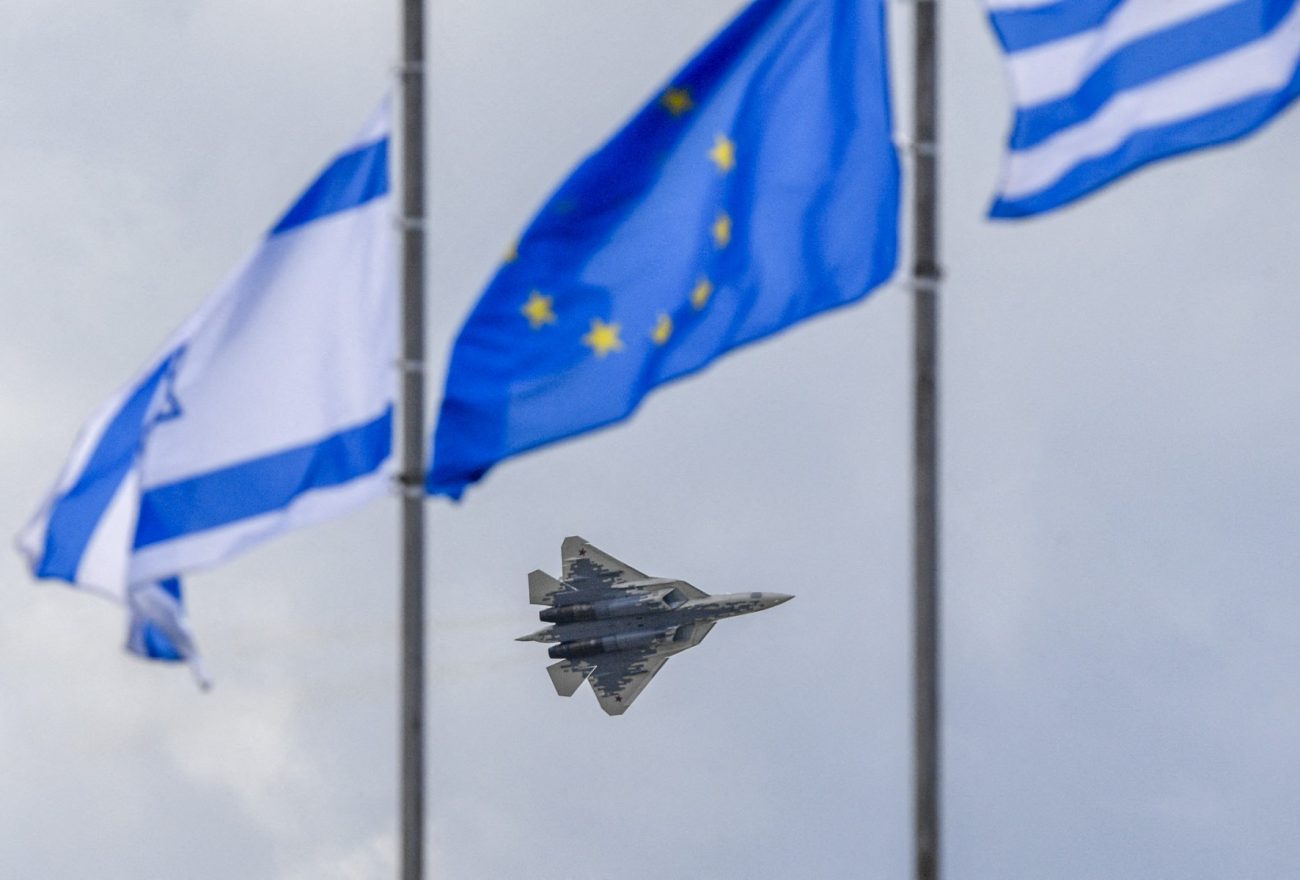“Stalled” For 24 Years, How Indian Air Force Is Going Full Throttle To Realize Its “Mission 42” Squadron Ambition

In the customary annual press interaction ahead of 93rd Air Force Day, Air Chief Marshal AP Singh dwelt at length on the very successful “Operation Sindoor” and the capability-building plans of the Indian Air Force (IAF).
After the retirement of the MiG-21 fleet, the IAF is down to 29 squadrons. The first LCA Mk1A has still to be handed over to the IAF. At best, the IAF will receive 12 aircraft this financial year, allowing it to form a truncated squadron.
The Chief of Air Staff (CAS) mentioned that he considers the entire LCA program as a continuum. LCA Mk1 had been inducted with limited capabilities. The Mk1A will bring better radar, more weapons, an EW suite, and also ease of maintenance, among others.
IAF has already acquired 40 LCA Mk1 and is committed to 180 Mk1A. The Mk2 will be a bigger aircraft with many more capabilities. The CAS hinted that if Mk2 were to be ready early, then some of the Mk1A orders could be diverted to Mk2.
Meanwhile, the IAF has made a strong case for acquiring 114 Made-in-India Rafale aircraft. With the naval order, there will be 140 aircraft, and the overall fleet strength will increase to 176.
Even when the LCA Mk2 is ready to be inducted, it will have lower capabilities than the current F3R standard Rafale. The French Air and Space Force (FASF) is already inducting the F4 standard and working on the F5 standard.
India’s Advanced Medium Combat Aircraft (AMCA) program is most important in that context. For India to sit on the global defence aerospace production high table, AMCA must succeed.
Su-30 MKI needs an upgrade. And buying a few squadrons of the Russian Su-57 ‘Felon’ as an interim fifth-generation aircraft is being suggested.
Rafale Proposal
India’s Ministry of Defence (MoD) has received a proposal from the IAF for acquiring 114 “Made in India” Rafale fighter jets, which would be built by the French firm Dassault Aviation in collaboration with Indian aerospace firms.
The proposal, expected to be worth over Rs 2 lakh crore ($22 billion) and featuring more than 60 percent indigenous content, will be discussed by the Defence Procurement Board headed by the Defence Secretary.
If given a go-ahead, it would be the biggest ever defence deal for India. Choosing Rafale maintains continuity and prevents the addition of an extra fleet that could be a logistical nightmare.
IAF has already inducted 36 Rafale, and the Indian Navy has ordered 26 of them, both under government-to-government (G2G) deals.
The Made-in-India aircraft will have a complement of longer-range air-to-air and air-to-ground stand-off weapons and missiles beyond the existing Scalp, which was used extensively to hit both military and terrorist targets inside Pakistan.
Dassault has already tied up with India’s Tata Group to make the Rafale fuselage in India at the rate of 25 a year. Rafale fuselage will be produced in India for both domestic and global markets.
This marks the first time in history that Rafale fuselages will be manufactured outside France. The indigenous content in the Made-in-India Rafale fighter jets will continue to increase in stages.
Dassault has already set up a Maintenance, Repair, and Overhaul firm in India. The M-88 engines will be overhauled in Hyderabad.
The urgency to get back to the authorised 42.5 squadrons has been reinforced by the regional threat perception and collusive Sino-Pak anti-India engagement.
India is also the only operator of Jaguar strike aircraft, which will eventually be phased out. The upgraded Mirage-2000 and MiG-29 will serve for approximately 10-15 more years. Finally, the IAF inventory should primarily comprise the Su-30 MKIs, Rafale, and indigenous LCA and AMCA fighters.
The 4.5 Generation Rafale Aircraft
The twin-engine delta-wing fighter aircraft is an omni-role fighter with frontal stealth capabilities. It can simultaneously undertake air supremacy, interdiction, reconnaissance, and the airborne nuclear deterrent missions.
Rafale has been used in combat over Afghanistan, Libya, Mali, Iraq, Syria, and in recent Op Sindoor. The aircraft uses digital fly-by-wire controls and has a very high level of agility.
The aircraft’s canards improve aerodynamic performance. The Rafale’s glass cockpit was designed around the principle of data fusion, which prioritises the display of information to pilots.
The Rafale also features an advanced avionics suite. The passive front-sector electro-optical system can operate both in the visible and infrared wavelengths. It has an integrated electronic survival system, “SPECTRA”, which protects the aircraft against airborne and ground threats.
The system incorporates a radar warning receiver, a laser-warning, a Missile Approach Warning (MAW) for threat detection, plus a phased array radar jammer and a decoy dispenser for threat countering.

AREOS, an all-weather, day-and-night-capable reconnaissance system used on the Rafale, can transmit information, such as images, in real-time to ground stations. The RBE2 AA active electronically scanned array (AESA) radar has a range of 200 km.
The €7.87 billion (Rs 58,891 crore) Government-to-Government (G2G) Rafale deal included 36 aircraft: 28 single-seat and eight twin-seat aircraft. The deal included tailor-made IAF-specific enhancements, including the integration of an Israeli helmet-mounted display (HMD), radar warning receivers, and low-band jammers. It included a weapons package and a performance-based logistics agreement.
The aircraft’s 14 hard-points can carry a 9,500 kg external load. The air-to-air missiles include Matra Magic II, MBDA MICA IR or EM, and MBDA Meteor. Meteor is an active radar-guided, BVRAAM that offers multi-shot capability against long-range manoeuvring jets, UAVs, and cruise missiles in a heavy electronic countermeasures (ECM) environment with a range of around 180 kilometres. The no-escape zone of over 60 km is the largest among air-to-air missiles, according to the manufacturer.
India also procured SCALP air-to-ground cruise missiles. Subsequently, the HAMMER (highly agile modular munition extended range) glide bomb was bought.
The Indian Rafale is a modified version of the F3R standard. The two squadrons are located at two different airbases. Both these airbases have infrastructure and capacity for an additional squadron each.
The French have already tested the F4 variant with upgraded radar, improved HMDS, and OSF (long-range optoelectronics system), which will add IRST for detecting and identifying airborne stealth targets at long range. It will be more effective in network-centric warfare, with more data exchange and satellite communication capacity.
The F5 variant is also evolving and expected by 2030. Key features include a loyal wingman capability, more powerful engines, improved stealth through conformal fuel tanks, advanced sensors, and enhanced electronic warfare (EW) capabilities.
The F5 will also carry new weapons, including Smart Cruiser missiles for suppression of enemy air defences (SEAD), and will be equipped to control drone swarms.
LCA Mk1A
The LCA Mk1A will have an Active Electronically Scanned Array (AESA) radar for enhanced target detection and tracking, and the capability to operate in a high ECM environment.
The aircraft is equipped with advanced electronic warfare systems, including self-protection jammers and improved digital warning receivers, to increase its survivability. It can carry a wider range of weapons, including indigenous Astra beyond-visual-range (BVR) missiles, various precision-guided munitions, and smart bombs.
The Mk1A design emphasizes improved maintainability through modular components and better access for ground crews, reducing turnaround times. The Mk1A aircraft currently boasts of 64 percent indigenous content.
In September 2025, 97 more LCA Mk1A jets were ordered, with deliveries expected to start in 2027-28, aiming to complete all 180 aircraft by FY 2032-33. Clearly, the program needs to be fast-tracked, with nearly 24 aircraft produced annually to meet the backlog.

LCA Mk2
The LCA Mk2 is a more powerful, 4.5-generation fighter aircraft to enhance the IAF’s capabilities. Key upgrades include a larger airframe, a more powerful GE-414 engine, a 6.5-tonne payload capacity with 11 weapon stations, for a variety of air-to-air, air-to-surface, and precision-guided weapons.
The aircraft features upgraded avionics, including the indigenous Uttam AESA radar, an infrared search and track sensor, and advanced electronic warfare systems with improved self-defence features. The cockpit will have an evolved design with fewer switches, large touch displays, and ergonomic HOTAS (Hands-On Throttle and Stick) controls.
Survivability will be enhanced by increased use of composite materials, better stealth-compatible shaping, and improved signature reduction.
The LCA Mk2 is currently in an advanced stage of development between ADA and HAL, with the airframe assembly underway. The rollout of the first aircraft is anticipated by early 2026, with the first flight by mid-2026.
The LCA-Mk2 could enter service around 2028-2029.
AMCA
The AMCA is a single-seat, twin-engine, all-weather fifth-generation stealth, multirole combat aircraft being developed for the IAF and Indian Navy.
The aircraft is being designed by ADA. The intended missions will include air supremacy, ground-strike, SEAD, and electronic warfare. It will supplant the Sukhoi Su-30MKI air superiority fighter, which forms the backbone of the IAF fighter fleet.
The AMCA design is optimized for low radar cross-section and super-cruise capability.
The design work was completed in 2023, and approval for the ₹15,000 crore (US$1.8 billion) project for prototype development was received from the CCS in March 2024.
As of mid-2025, the prototype development phase is underway after the completion of the feasibility study, preliminary design stage, and detailed design phase.
At the Aero India 2025, a full-scale engineering model of the AMCA was publicly demonstrated for the first time. The DRDO expects to roll out the prototype of the 25-ton AMCA by early 2027.

The first flight is expected in late 2028. A total of 5 prototypes are to be built. The first three prototypes will carry out developmental flight trials, whereas the next two will focus on weapon trials.
The prototype will be rolled out at an interval of 8-9 months. Each prototype will cost ₹1,000 crore (US$120 million)—certification by 2032 and induction in 2034.
The CCS mentioned that any cost overruns during the development should be reported directly to CCS instead of the Defence Ministry.
The government had shifted to an “industry partnership model” instead of the initial plans for SPV. These changes were made to avoid further delays due to setbacks in development funding and a lack of clearance from the US government for engine license production.
The private sector partner would be responsible for development, production, and lifetime maintenance of the jet. In March 2025, the Ministry of Defence formed a top-level committee, chaired by the Defence Secretary, to evaluate a “clear-cut strategy and production-cum-business model” aimed at accelerating the development of AMCA.
On 27 May 2025, the Defence Ministry cleared the “AMCA Programme Execution Model” under which ADA later released an Expression of Interest (EoI) to develop AMCA through industry partnership.
Here, private or public sector companies can bid either as an independent entity, as a consortium, or in a joint venture for the contract. One of the criteria is the revenue-to-order book ratio, which ensures that a large share of aeronautical projects is not taken up by any single entity, including HAL, to prevent monopolisation.
On 24 September, Larsen & Toubro (L&T) and Bharat Electronics Limited (BEL) entered into a strategic partnership, and the consortium is expected to submit its response for ADA’s EoI notice.
The consortium is expected to combine L&T’s expertise in developing strategic defence and aerospace platforms with BEL’s experience in defence electronics and systems.
On 26 September, Bharat Forge Limited (Kalyani Group), Data Patterns (India) Limited, and BEML Limited signed a tripartite memorandum of understanding (MoU) to participate in the AMCA programme.
The companies will have individual stakes of 50%, 20% and 30%, respectively, in the consortium. The partnership would reportedly bring together the strengths of each company, which includes BFL’s heavy engineering pedigree, BEML’s system assembly and manufacturing presence, and Data Patterns’ strength in avionics and sensors.
Another MoU was signed by Goodluck India Limited, BrahMos Aerospace Thiruvananthapuram Limited (BATL), and Axiscades Technologies to submit their bid for the AMCA programme.
Tata Advanced Systems has independently bid for the programme. The participation of Adani Defence & Aerospace in the programme has been confirmed by its CEO, Ashish Rajvanshi.
HAL had released a tender outlining its requirement to select a private-sector firm to participate in the AMCA programme jointly as part of a consortium under the public-private partnership (PPP) model.
HAL is expected to respond to the EoI with either one or two partners shortly. Mahindra Group and the Adani Group are the potential partners for HAL in the project.
Make-With-India Safran Aero-Engine
French aerospace company Safran and India’s DRDO have joined to develop India’s first jet engine with Indian intellectual property rights (IPR).
Safran will transfer 100 percent of the technology to DRDO, including that for crystal blades. The joint project between Safran and India’s Gas Turbine Research Establishment (GTRE), a DRDO lab, will develop and produce a 120 kilonewton (kN) engine, which will power India’s twin-engine AMCA fighter.
It is reported that Safran-GTRE will develop nine prototype engines within 12 years. The initial engines will have 120 kN of power and will later increase to 140 kN by the end of the 12-year period.

Single-crystal blades use super-alloys and are efficient, long-lasting, and also cope better with higher heat and rotational stress. The critical defence technology will have spin-offs for larger airliner and cargo aircraft engines.
On 22 August 2025, the Indian Defence Minister Rajnath Singh announced and confirmed that the engine for AMCA will be co-developed with Safran over a period of 10 years.
Only the US, Russia, the UK, and France are capable of designing, developing, and producing aircraft engines. For a long time, China has used Russian or reverse-engineered engines to power its military aircraft.
India’s GTRE tried to develop an indigenous engine, Kaveri, but the project was not completed. India is powering its LCA Mk1 variants with the American GE F-404 engines. The LCA Mk2 will have a GE-414 made in India. Finally, India must reduce foreign dependency.
Interim Su-57
Russia’s Sukhoi Su-57 ‘Felon’ evolved from the Indo-Russian Fifth Generation Fighter Aircraft (FGFA), contract for which was signed in October 2007.
The FGFA itself had evolved from Russia’s PAK FA. By 2014, however, the IAF began voicing concerns over performance, cost, and work-share.
India found that the aircraft did not meet its requirements and eventually left the partnership in 2018. Sukhoi continued to develop and promote the Su-57 for prospective export customers.
The export variant, designated Su-57E, was officially unveiled at the MAKS-2019 airshow on 28 August 2019. Su-57 has been showcased at many airshows, including in China and India.
The first Su-57 operational unit was formed in Russia in 2021. It is supposed to be a multi-role aircraft with significant air-to-air and ground attack capability. Russia has claimed that the Su-57 saw significant combat in Ukraine.
Around 42 Su-57 have been produced to date. Russia has already ordered nearly 30 more. The Su-57’s unit cost is generally estimated to be between $35 million and $50 million. However, some estimates, particularly those factoring in potential “Made-in-India” production, suggest a cost closer to $60-75 million. Clearly, it is much cheaper and the only one available.
Russia has offered to set up production in India and transfer technology. Also on offer is the Russian stealth drone Sukhoi S-70 Okhotnik-B, which forms Manned Unmanned Teaming (MUM-T) with Su-57, and the long-range R-37M AAM.
The single-engine Sukhoi Su-75 “Checkmate”, also designated as the Light Tactical Aircraft (LTA), is a stealth fighter aircraft under development with planned induction around 2027.
China plans to increase its J-20 production to 100 a year and targets to have 1,000 by 2030, when AMCA will be making its first flight.
It will reach 1500 by 2035 when India optimistically inducts the AMCA. Pakistan is already talking to China to induct the J-35A in the next 3-4 years.
Also, around 200 Pakistani technicians and engineers are working with TAI on the Turkish 5th-generation aircraft. A country with a failing economy seems likely to have a fifth-generation aircraft earlier than a country that is already the fourth-largest economy.
But some issues require surmounting.
Su-57 production is still slow, though increasing. Russia is still fighting a long war. Their industry is more geared towards that. Because of Western sanctions, there are issues related to payment.
The balance of payments had become more adverse due to India’s higher oil imports. The same is easing out a little as the global oil prices have dropped considerably. Lastly, IAF already has 60 percent of its fleet from Russia and therefore cannot continue to increase that basket.

Way Ahead India
The IAF fighter fleet is most affected by numbers and the technology backlog. The global defence budget average is nearly 2.5% of GDP. For FY25 (Budget Estimates), the defence allocation was around 1.9% of the GDP, which is the same as the previous year.
India is the most threatened large nation. India must increase its defence expenditure share in GDP to 2.5% at the earliest.
Despite the highest level push for “Atmanirbharta” (self-reliance) in defense, progress is slow and requires a more aggressive push. The country needs special technology missions for Aero-engine, electronic warfare, hypersonic, cyber warfare, Artificial Intelligence, Robotics, and also skill development and retention. A lot more needs to be done regarding the number of ISR and targeting satellites, as well as satellite navigation.
IAF Chief has spelt the urgency for fighter aircraft numbers repeatedly and most candidly. Defence R&D has to catch up. Defence Production must gradually be released from bureaucratic control.
HAL must be supported to scale up LCA production to 24 a year quickly. Greater discussion is required on the Su-57, considering technology levels, production capacities, realistic timelines, and the size of the Russian basket.
Decision-making has to be quicker. IAF requirements of 126 MMRCA were spelled out in 2001. It is time for the government to take an early decision on the 114 additional Make-in-India Rafale.
AMCA private consortium must be finalised before the end of the year. Su-30 MKI upgrade needs to be pushed. Also need to push Astra III and BrahMos II. Acquiring additional S-400s and pushing equivalent indigenous “Kusha” AD systems are crucial.
We have already wasted 24 years in MMRCA. India must make some quick, bold decisions.
- Questions and Answers
- Opinion
- Motivational and Inspiring Story
- Technology
- Live and Let live
- Focus
- Geopolitics
- Military-Arms/Equipment
- Sécurité
- Economy/Economic
- Beasts of Nations
- Machine Tools-The “Mother Industry”
- Art
- Causes
- Crafts
- Dance
- Drinks
- Film/Movie
- Fitness
- Food
- Jeux
- Gardening
- Health
- Domicile
- Literature
- Music
- Networking
- Autre
- Party
- Religion
- Shopping
- Sports
- Theater
- Health and Wellness
- News
- Culture

